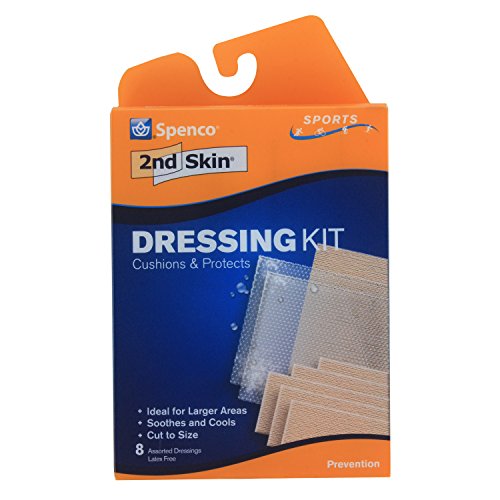If you are someone whose work demands to be outdoors even during unpredictable, severe weather, like heavy rain and storm, then you’ll need a solid pair of rubber boots. Not only do they provide good traction, but they also keep your feet dry and safe during rains.
Rubber boots are indeed an ideal pair of work boots but it does have a bad impact on your feet. The frequent friction of your skin against rubber is going to cause you some painful blisters, also rubber is a non-absorbent material that traps heat and makes your feet a suitable breeding place for bacterial infections.
However, there are some exceptions and if you can spare some minutes, this article will answer all your queries.

Why are rubber boots hard on your feet?
Well rubber boots are hard on your feet because,
1.) They take time to break in- usually rubber retains its original shape so there is no break in period.
2.) They cause blisters if proper precaution is not taken- if you’re not using socks with rubber boots, your skin’s friction against rubber will cause blisters.
3.) Since most rubber boots come with a flat footbed, they’re not ideal for people with flat feet- rubber boots are commonly constructed with hardly any arch support and flat insoles that are devoid of any padding.
4.) They make your feet prone to bacterial infection- since rubber is a non-breathable material, so even if you sweat, it will not be absorbed, resulting in infections.
5.) They keep your feet cold during severe winter as they do not provide insulation- rubber boots are good for rain and snow as they keep the feet dry, however, they lack insulation and warmth as there are no insoles present.
But you don’t have to worry because here in this article, we’ll provide you solutions to all the problems mentioned above. But before that, read some of the things you need to consider before buying a rubber boot:
The right fitting- usually rubber boots rest high on the leg so the width of the calf must be considered. Because rubber is a rather hard material, make sure you have plenty of room to move around comfortably.
Even with pants on, the calf opening should be large enough for your legs to glide in easily and comfortably.
Make sure they’re not too tight or too loose as both are harmful for your feet.
Boots that provide comfort- though rubber boots are not ideal for warm climates, they’re a lifesaver when it comes down to working in a wet, cold environment. They keep your feet dry that lets you work comfortably throughout the day.
Gives good traction- on slick, wet areas, rubber boots give the most stable and dependable traction, reducing your chances of a damaging fall. This traction also creates leverage for pushing or dragging large, heavy things without slipping by providing good friction on surfaces.
Here is a chart to help you better understand both the pros and cons of rubber boots:
| Pros | Cons |
| Suitable for unpredictable, unstable weather | The non- porous nature of rubber boots trap moisture and heat that generates problems for your feet |
| Provides excellent traction on wet, slippery surface | Most rubber boots are comparatively heavy |
| Safe in terms of working since rubber is an insulator, there is no danger of getting electrocuted | They are not flexible so moment is limited |
| Protects your feet against heavy objects falling on it | Not suitable for people with flat boot as it does not have arch support |
Okay, so let’s get started with the most important thing. Here we provide you with some tried and tested tips to make your rubber boots feet-friendly.
4 Ways to Make Your Rubber Boots Comfortable
1.) Use moisture wicking socks
While rubber boots are rigid and inflexible, it does not allow adequate ventilation for your feet and so any additional materials utilised in the boot, particularly the interior lining, become extremely significant.
Knowing that your rubber boots will not absorb sweat, you can use socks. But avoid wearing thick wool or cotton socks as it does the necessary job of absorbing sweat, but it remains wet.
You can go for these socks from Balega-
- Keep feet clean, dry, and odor-free
- Drynamix polyester
- Constructed to mimic running shoe design
- Seamless toe box minimizes friction
- Medium-volume cushioning
Prices pulled from the Amazon Product Advertising API on:
Product prices and availability are accurate as of the date/time indicated and are subject to change. Any price and availability information displayed on [relevant Amazon Site(s), as applicable] at the time of purchase will apply to the purchase of this product.
They provide cushioning in the toe and heel areas, and also kills bacteria and fungi keeping your feet odor-free and dry. They also have a tighter fit around the arch for maximum support.
Since we know there is hardly any insulation in rubber boots, there are ways to modify your rubber boots so that they provide warmth and comfort in extreme cold temperatures. Watch this short tutorial that will solve your problem.
2.) Use blister-protection bandages
It is always useful to carry some first aid products with you while at work, even at the slight chance of a rash or blister, use bandages as a precaution as it will prevent further injury.
These Spenco 2nd Skin Dressing Kit Bandages provide instant relief by soothing and cooling the painful blisters.
- Adaptable to most wound sizes
- Medical grade adhesive
- Soothing and cooling
- Flexible
- Provides instant relief
Prices pulled from the Amazon Product Advertising API on:
Product prices and availability are accurate as of the date/time indicated and are subject to change. Any price and availability information displayed on [relevant Amazon Site(s), as applicable] at the time of purchase will apply to the purchase of this product.
3.) Heel support insoles
You must be aware by now that most rubber boots come with a flat footbed which causes issues for people who suffer from flat feet. And this can cause some serious health implications.
Therefore, using additional arch support if your boot doesn’t come with one, is indeed necessary.
Dr. Scholl’s arch pain relief insoles provide support to a great extent which lets you work with ease without pain and discomfort. Using insoles will not only provide relief from pain, but it also acts as insulation.
- Designed for people who suffer from arch pain due to stress on their arch
- With Shock Guard Technology to treat pain at the source for immediate, all-day relief
- Provides extra arch support
- Fits Casual shoes, Sneakers & Work boots/shoes. No trimming required
Prices pulled from the Amazon Product Advertising API on:
Product prices and availability are accurate as of the date/time indicated and are subject to change. Any price and availability information displayed on [relevant Amazon Site(s), as applicable] at the time of purchase will apply to the purchase of this product.
Apart from these insoles, you can even use ZenToes Toe Tubes that protect your toes and can even be cut accordingly to prevent blisters caused by friction.
- Soft fabric coated toe tubes
- These toe protectors are 1.6 inch circumference around your toe, and made of a stretch material.
- Perfect length so that you can protect a toe corn, callus or blister on any toe.
- This toe sleeve wont slip off
- Medical-grade gel is latex free and washable
Prices pulled from the Amazon Product Advertising API on:
Product prices and availability are accurate as of the date/time indicated and are subject to change. Any price and availability information displayed on [relevant Amazon Site(s), as applicable] at the time of purchase will apply to the purchase of this product.
4.) Customize your rubber boots
As you know rubber boots hardly lose their form, if you’ve purchased a wrong size, that is, a size too tight for your feet, you can easily fix this issue at home.
All you need is a blow dryer to run on high heat, and it will help stretch out the parts that seem tight.
Apart from this, you can stretch your boots and all you need is water bags, put it inside each boot, and let it remain in the freezer overnight.
Although, you can also purchase stretchers that come in handy whenever you need to stretch out your boots. These STEP 1 Shoe Stretchers are useful and help make your boots comfortable.
To conclude, rubber boots are indeed tough and provide safety in certain work environments, but it comes with its own disadvantages. But don’t let these disadvantages keep you away from the safety it provides.
With the right knowledge and modifications, you can make your rubber boots comfortable which will not only provide you traction and safety, but will also feel comfortable.












